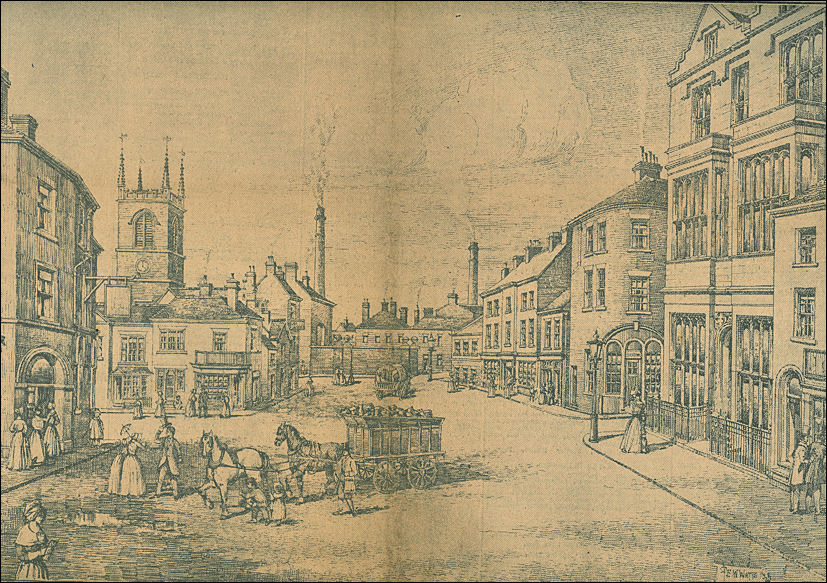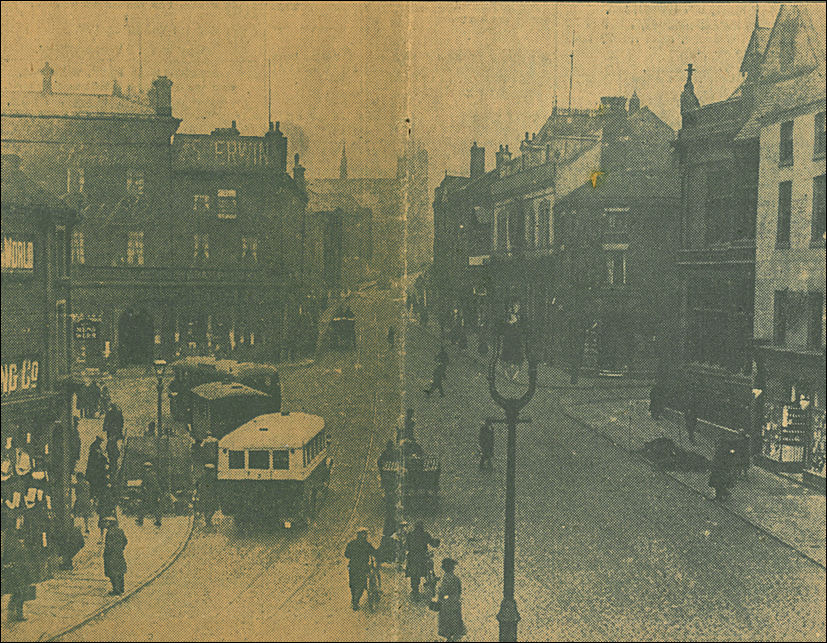|
This c.1829 drawing
was by a Mr. F. E. Watts, Architect of Hanley.
On the right is the
Manchester and Liverpool District Bank which was built in 1833. Next
to the bank and closer to the viewer is a chemist.
Still on the right
hand side just past the bank is The Grapes public house, the two
story building past The Grapes was the original Angel which was
rebuilt in the 1880's.
To the left is the
Golden Lion public house and further up on the left is the Sealion
public house.
Behind the Sealion is
the parish church of St. John the Evangelist, sometime after this
picture was drawn the clocks were moved and re-installed in the bell
chamber ventilation panels, also the height of the pinnacles was
reduced.
"HANLEY
is a large and modern market town, and chaperly, in the parish and
borough of Stoke, about one mile and a half from that town, and
rather more than two east by north from Newcastle; situate near to
the turnpike road leading from the latter place to Leek, and close
to the Grand Trunk canal: the exportation, by means of this
navigation, of earthenware to Liverpool, Hull, the Metropolis,
&c., is of such an extent, that a company is established for the
sole purpose of carrying that article.
The principal part of the town is on an elevated site; the streets
are not regularly disposed, but many of the houses are well built.
The police of this town, like Stoke, is under the control of
commissioners; and a chief bailiff is annually elected from among
the most respectable inhabitants, whose duties are of the same
nature as those exercised by the bailiff of Stoke. The lord of the
manor holds a court baron once a year; the crown (as possessor of
the duchy of Lancaster), holds, by its officer, a similar court once
within the same period; and another court, in which debts under
forty shillings are recoverable, sits once a fortnight.
The church, or rather chapel of
ease, is a commodious structure of brick, erected in 1788, with a
square tower one hundred feet in height, containing a fine set of
bells; the living is a perpetual curacy, in the patronage of the
trustees of the chapel. Dissenters of various denominations have
numerous places of worship here; and there are British and national
schools, well supported by voluntary contributions.
A mechanics' institute is established in the town; and near it is
that excellent institution, the North Staffordshire Infirmary. In
1812 an act was obtained for enlarging and regulating the market,
and other specific purposes; and among the improvements which have
consequently been effected is the erection of a very convenient
meat-market. The act authorizes markets to be held on Wednesday and
Saturday; the latter, which is the principal, is abundantly supplied
with provisions of all kinds : large markets or fairs for cattle are
held four times a year."
FROM
PIGOT'S TYPOLOGY OF ENGLAND IN 1841
- Staffordshire and the
Potteries
|
![]()

